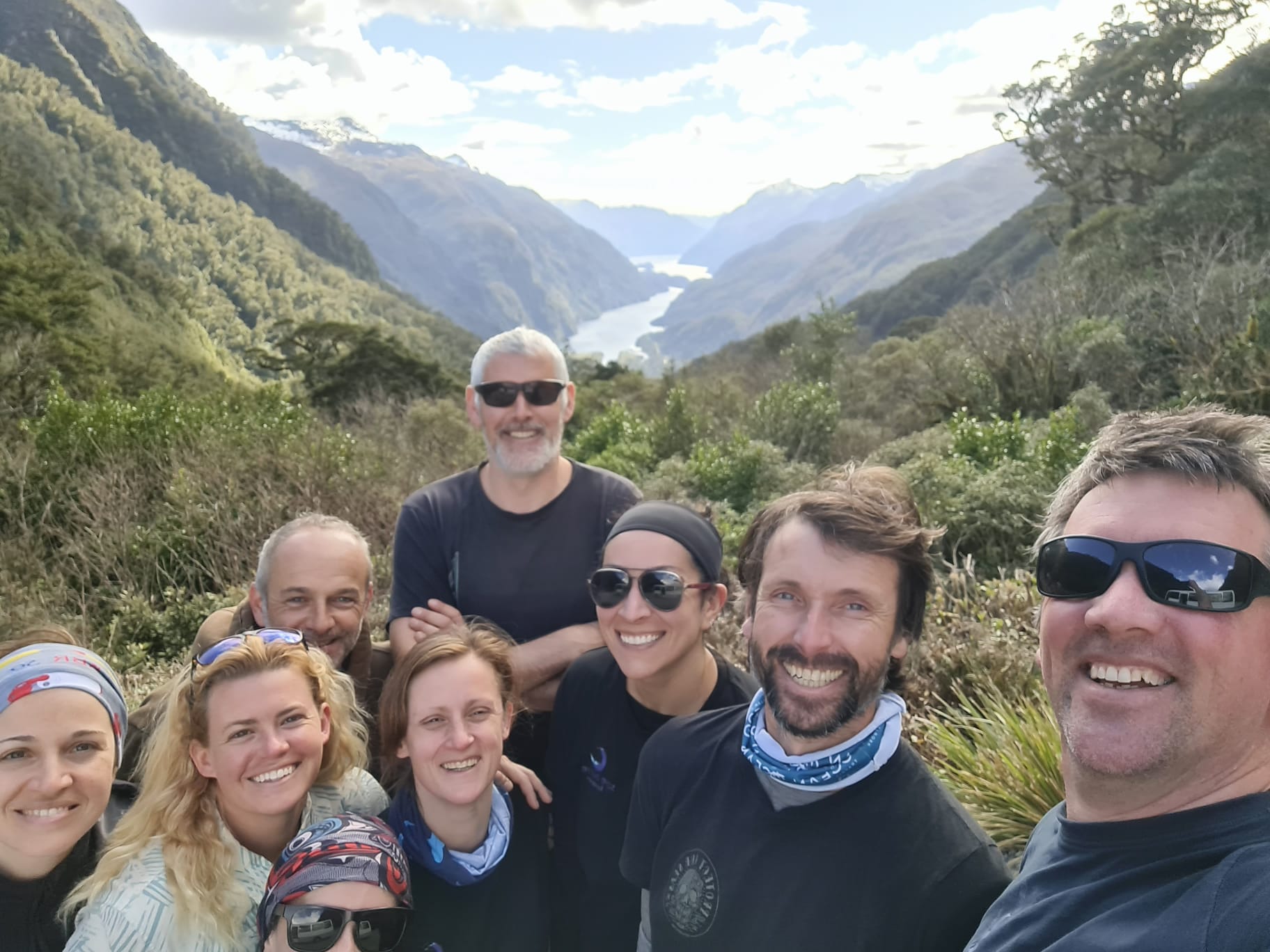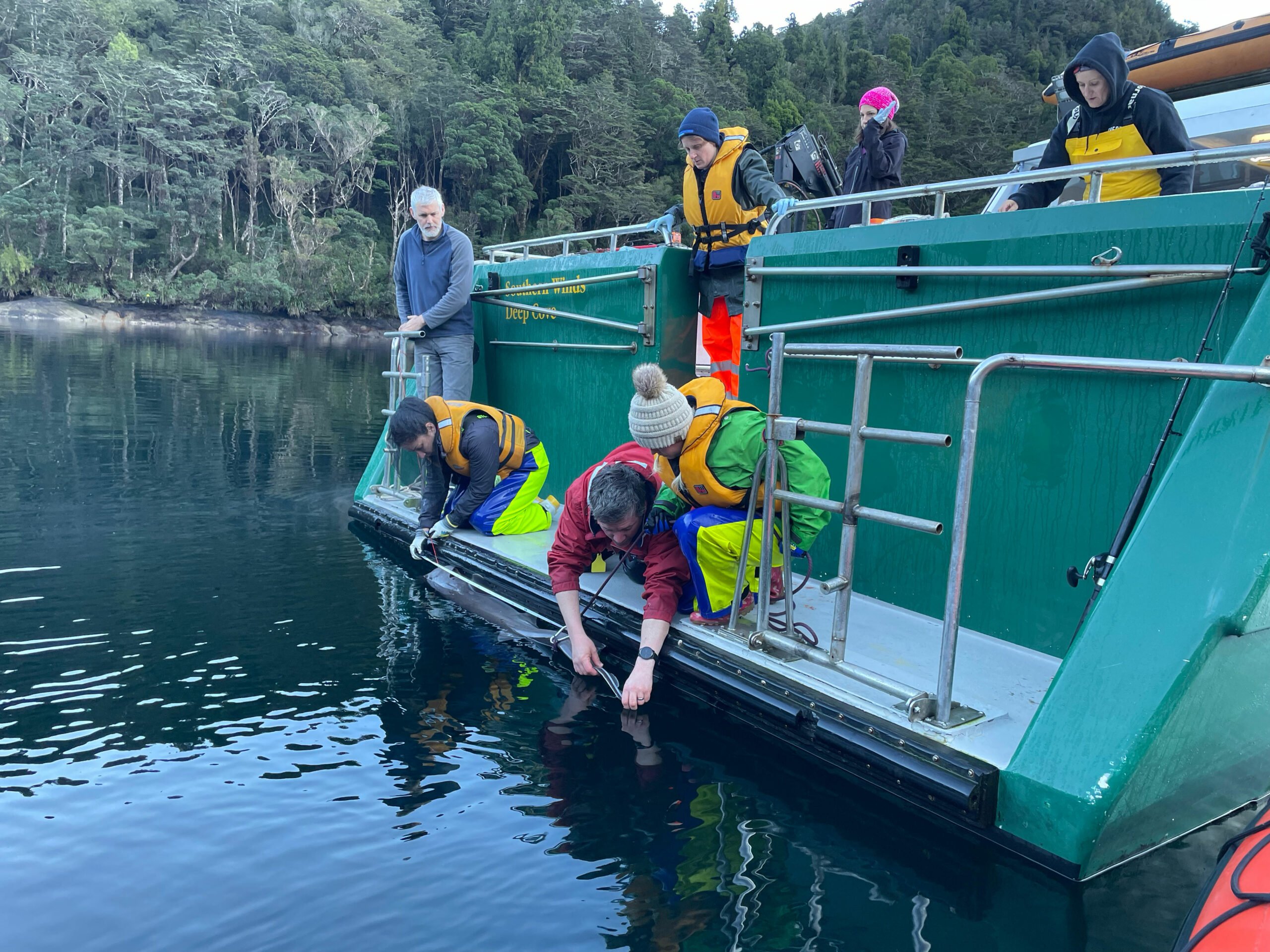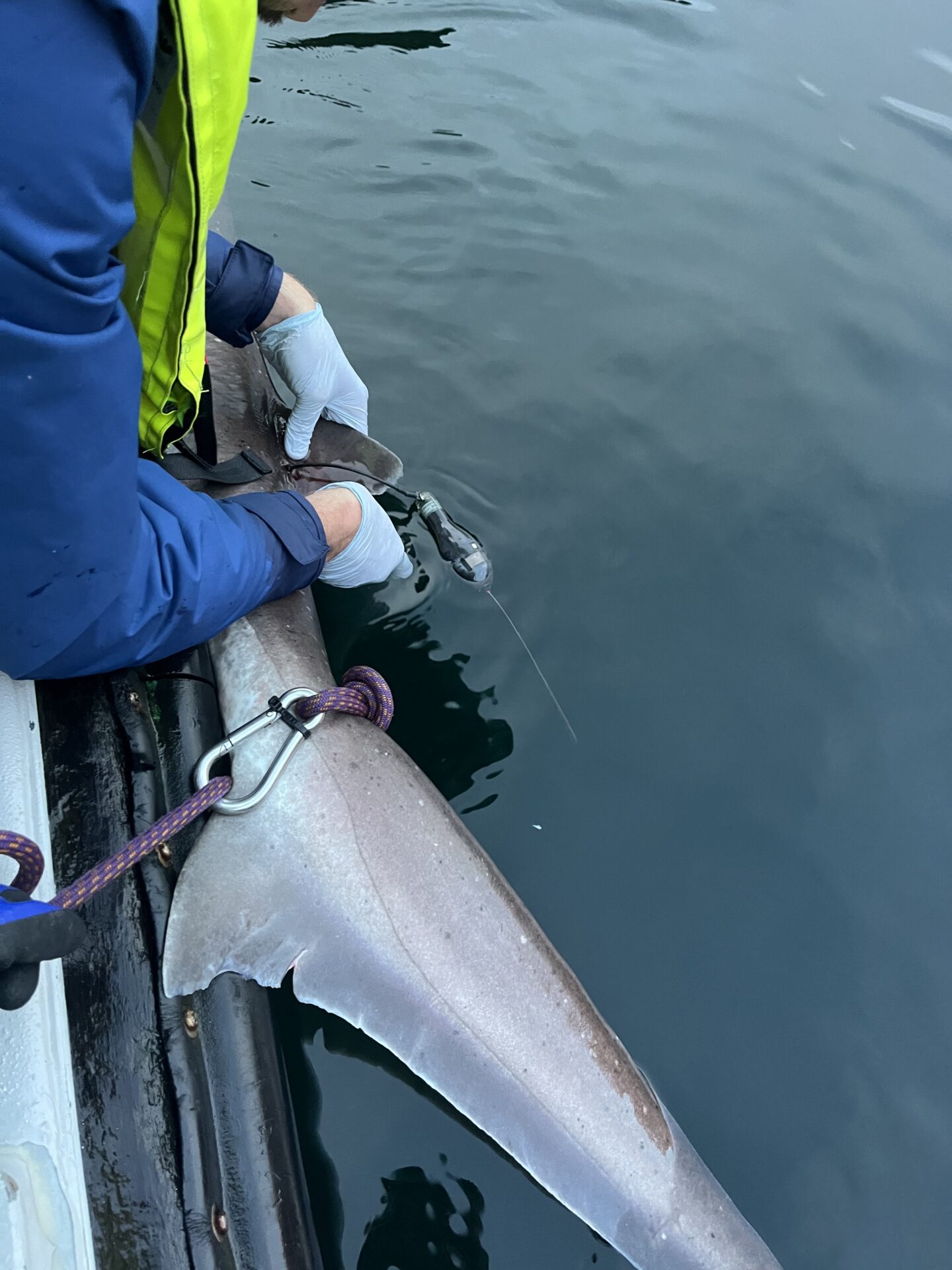Sat tags, finding receivers and early insights
During the first week of October, we made our much-anticipated return to Te Rua-o-te-moko, Fiordland to check on our sharks (and hopefully find our receivers). For this expedition we teamed up with the Department of Conservation, Te Papa Atawhai (DOC), aboard their vessel the Southern Winds. DOC have provided us with endless support for this project, on this occasion including a brilliant crew to help us with diving, boating and shark wrangling, amazing meals to keep us fuelled, and great company too– thanks DOC!
The Southern Winds’ home is in Deep Cove, at the head of Patea, Doubtful Sound, a Fiord north of our study area. Patea is one of the only sounds that can be accessed by road, so on this trip we traded helicopter transfers, for a ferry across Lake Manapouri, and a bumpy bus ride over the hill. The benefits of road access include spectacular views, and less restrictions on luggage (allowing us to bring along our remotely operated vehicle ROV)!

Expedition team at the viewpoint going over the hill into Deep Cove – Patea, Doubtful Sound in the background. Left to right: Miriam Pierotti, Eva Ramey, Gabi Wood, James Bell, Alice Rogers, Pete Kirkman (Skipper), Brit Finucci, Ross Dwyer and Richard Kinsey. Not pictured DoC’s “Wazza” and Millie Mannering. Photo © Richard Kinsey
As always in Fiordland, our goals for the week were ambitious – tag nine more sharks for our acoustic study (to bring our total to 20), fit three large sharks with satellite tags, check our array of 29 receivers, and use our Boxfish ROV to conduct habitat surveys in some of the least studied areas of southern Fiordland. Not too much then…
After a long, and only slightly bumpy sail from Doubtful to Te Puaitaha, Breaksea Sound, we arrived at our first GPS mark to check a receiver. All our VR2W acoustic receivers are deployed and retrieved on SCUBA at ~ 15 m, secured to the seafloor with small anchors. Locations are not marked by surface buoys, so we must take care to accurately record GPS coordinates and make detailed notes about the above and below-water environment. It’s nerve-wracking to say the least to leave expensive equipment at the bottom of the ocean and hope that you tied all your knots tight enough! However, to my great relief (and thanks to the brilliant team) we quickly spotted our receiver exactly where we’d left it! Even better, when we offloaded its data, we had already detected a number of sharks that we tagged back in May – an excellent start!

The diving “A team” preparing to check and retrieve receivers, from left to right, Millie Mannering (DOC), Miriam Pierotti, Eva Ramey and Alice Rogers. Photo © Ross Dwyer
The week progressed with further success as we checked on 20 of our 29 receivers, all of which we found (!) and all of which provided initial data on sevengill movements and habitat use around the Fiords. We also caught enough sharks to complete our acoustic tagging – all male this time, which was interesting given that the May cohort was dominated by females.

Dr Brit Finucci and PhD student Eva Ramey secure a shark being measured by Richard Kinsey (DOC). Dr Alice Rogers, VUW PhD students Miriam Pierotii and Gabriella Wood, and Skipper Pete Kirkman look on. Photo © Ross Dwyer
And, although it took us until the very last morning of our very last day (on our very last piece of bait), we also managed to catch three sharks large enough to carry satellite tags. Rocky II, Hulk and Big Richie will now collect continuous data about their movements, depth use, and behaviour for the next ~12 months. They will be helping us to understand how and if sevengills use the deeper waters of the Fiords to escape marine heatwaves or flood events.

Dr Ross Dwyer secures a miniPAT satellite tag to the dorsal fin of “Big Richie,” who will now be gathering data on his movements and behaviour for the next twelve months. Photo © Eva Ramey
We’ll be back in the Fiords in January with a different research focus, but we will no doubt be keeping an eye out for our very favourite sharks!
